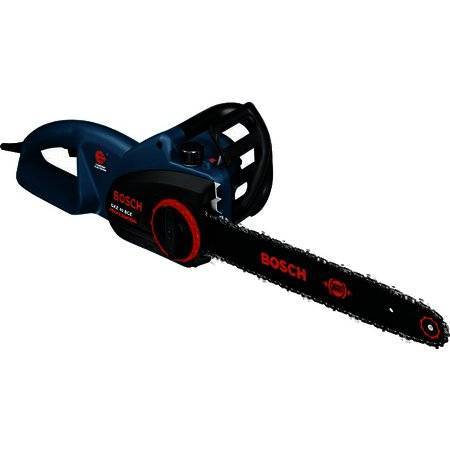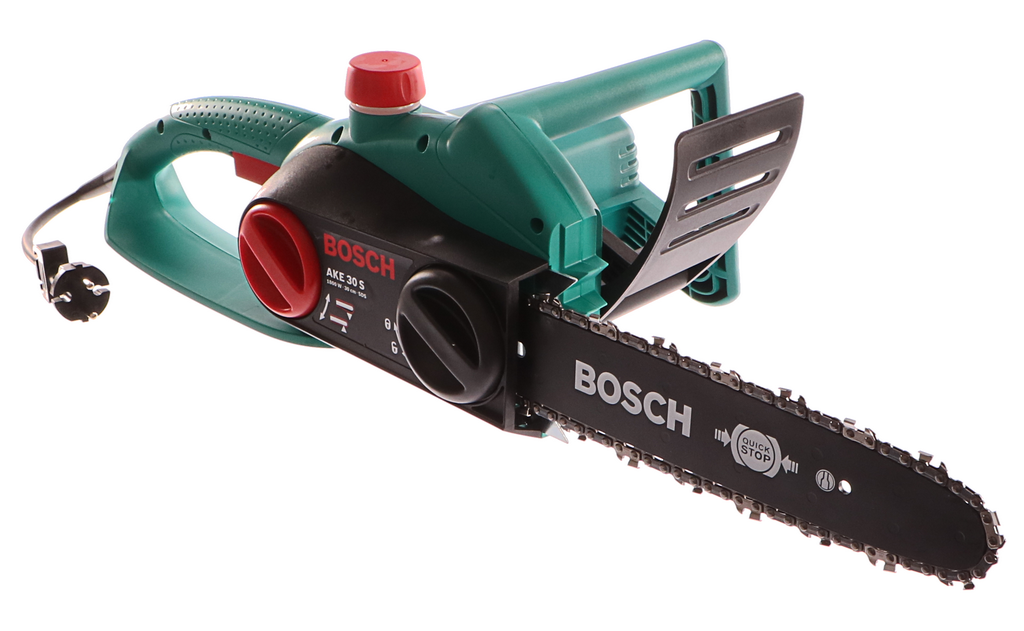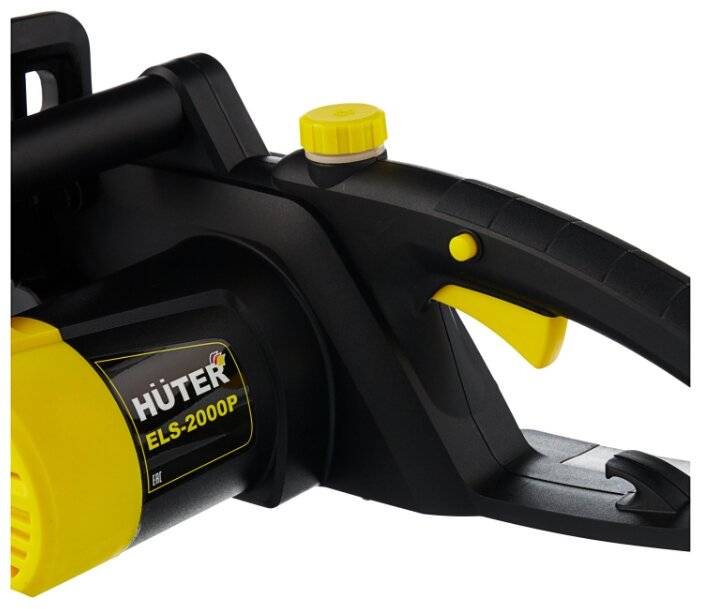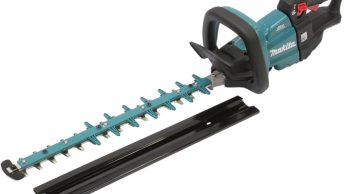Examples of Simple Machines in The Real World
I look at objects around me and see simple machines everywhere. Even that thing you use almost daily is made of a single simple machine, or several of them put up together to make a complex machine. Humans are innovative and will do as much as they can do work much easy. Even students will encounter some simple machines as they learn, although they might not realize it. Here are some of the most common simple machines found in the real world.
- Pencil Sharpener – A pencil sharpener is made of two simple machines: the wheel and axle and the wedge.
- Hammer – A hammer is an example of a lever when it’s used for driving nails into wood.
- Spinning Wheel – A spinning wheel is an example of a wheel and axle. It is used for turning fiber into yarn and has been in existence since ancient times.
- Clocks – A clock is also an example of a wheel and axle. Some clocks consist of levers, pulleys, and wedges, making them complex machines.
Classes of Lever Simple Machine
The position of the three points, namely, force, load, and the fulcrum, is responsible to decide the class of the lever. The following are the three classes of a lever simple machine:
1. First Class
In this class of the lever, the fulcrum is located in the middle of the plane. The force is applied at one end of the plane, whereas the load is kept at the other end. For example, seesaw, scissors, plier, etc.
2. Second Class
In the second class of lever, the load is present at the middle of the plane. The fulcrum is located at one end, whereas the force is applied at the opposite end. For example, wheelbarrow, nutcracker, stapler, etc.
3. Third Class
In the third class of lever, the fulcrum is present at one end of the beam and the load is present at the opposite end. The force is applied to the middle of the plane. For example, a hockey stick, hammer, rake, etc.
Fun Science for Kids
Looking for lots more fun, science experiments for kids? You’ve GOT to try some of these outrageously fun science experiments for kids! We have so many fun, creative and easy science experiments for elementary age children:
- 100 Amazing Food science experiments for kids – arranged by type of science
- Colorful Capillary action science experiment (also known as walking water)
- Lots of really cool dry ice experiments to try at home
- Amaze kids with these 12 Hands on Science experiments with batteries
- 24 Epic Solar system science projects to try this week
- Fun Water balloon science experiment that explores density
- 50 Fun Preschool science experiments the whole family will want to try
- Amazing, heat-sensitive color changing slime
- Simple Galaxy science project
- Easy and Fun Dancing Raisins Experiment
- Learn about weather as you find how to make a weather vane
- Eye opening Eye science experiments
- Easy-to- make Air pressure science project
- Amazing POP rocks science experiment is one of our all-time favorite science experiments we like to do during the summer are
- Stunning Chromatography Flowers are so pretty you’ll forget it was as science project!
- How to Make a Lava Lamp – super easy and SO cool!
- 30 Simple machines science projects kids will want to try
- Easy, fascinating, and colorful project answering Why do Leaves Change Color Experiment
Pulleys
A pulley usually has a wheel and a rope that goes through its rim. A sheave is a pulley with a grooved rim. A pulley is a simple machine that makes it easy to lift heavy objects.
To lift objects, a person usually pulls down one side of the rope, which makes the other side move upwards. It can have one or more wheels. A pulley with more than one wheel makes work even easier since the force pulling one side of the rope is increased.
Pulleys can be used solely or as a combination to move objects. Pulleys are widely used, and if you are keen enough, you might observe some around you. Some of the pulleys we encounter in daily life include:
- A cargo system
- Crane
- Engine
- Flag pole
- Bulldozer
- Escalator
The three types of pulleys include:
Fixed Pulleys
This pulley type has a drum that is secured to only one spot. It allows the changing of the direction of a force, making moving objects from one point to the other easy.
Movable Pulleys
This type of pulley has a drum that moves as the user is moving the load. A well is the most common example of a movable pulley. It works by reducing the amount of force required to lift a load. The load is placed on one side of the pulley, and force is applied on the other side. As the person fetching water applies the force, the load goes downwards, creating opposing forces.
Compound System
A compound system has both fixed and movable pulleys. It’s also referred to as a combination pulley. Compound pulleys are mostly found in construction sites for lifting heavy equipment. The more the number of pulleys a compound pulley has, the easier it gets to lift a load.
Почему именно эта модель?
На момент покупки отзывов о продукции этого бренда практически не было. Информации о том сколько в киловаттах будет аналогом мощности двухтактного двигателя также не обладаю. Да и невозможно так сравнивать, поскольку крутящий момент пилы зависит не только от мотора, но и от конструкции редуктора, диаметра вала, количества зубьев на звёздочке и т.д.
У меня есть личное отношение к определению ценового диапазона. Если бы я работал профессиональным заготовителем дров, то выбирал бы товар из категории “дороже, но надёжнее”. Но если инструментом не предполагается пользоваться каждый день, по восемь часов в сутки, круглый год, то не вижу смысла переплачивать за “супер надёжность”. В случае с домашней заготовкой дров это увеличивает стоимость продукции, и снижает рентабельность.
В итоге при выборе модели sterwins 2000, опирался на длину шины, на количество киловатт (необходимо чтобы розетка, электроавтомат, сечение проводов, выдерживали требуемые нагрузки). Также меня подкупил тройной срок гарантийного ремонта. Конечно, магазины Леруа находятся на изрядном удалении от хозяйства, но как мне кажется, в совокупности это наиболее подходящее предложение. Качество конкретного инструмента — лотерея. Можно с одинаковым успехом купить постоянно ломающееся устройство за большие деньги, и надёжный инструмент за небольшую сумму. С этим не угадаешь и заранее результат лотереи не узнаешь.
Pulley
If we want to lift that same 100-lb. weight with a rope, we could attach a pulley to a beam above the weight. This would let us pull down instead of up on the rope, but it still requires 100 lbs. of force. However, if we were to use two pulleys — one attached to the overhead beam, and the other attached to the weight — and we were to attach one end of the rope to the beam, run it through the pulley on the weight and then through the pulley on the beam, we would only have to pull on the rope with 50 lbs. of force to lift the weight, although we would have to pull the rope 4 feet to lift the weight 2 feet. Again, we have traded increased distance for decreased force.
If we want to use even less force over an even greater distance, we can use a block and tackle. According to course materials from the University of South Carolina, “A block and tackle is a combination of pulleys which reduces the amount of force required to lift something. The trade-off is that a longer length of rope is required for a block and tackle to move something the same distance.”
As simple as pulleys are, they are still finding use in the most advanced new machines. For example, , a 3D printer that can build furniture-sized objects, employs a system of wires and computer-controlled pulleys anchored to the walls, floor, and ceiling.
What is a Simple Machine?
A simple machine refers to a device with few or no moving parts used to modify motion and a force’s magnitude to do work easily. They accomplish this by:
- Transferring force from a point to the other
- Changing a force’s direction
- Increasing force’s magnitude
- Increasing force’s speed or distance
The sole purpose of simple machines is to make work easy. If there were not available, some tasks would even be impossible. There are six simple machines, which include:
Facts for Kids
x
To view this video please enable JavaScript, and consider upgrading to a
web browser that
supports HTML5 video
Facts for Kids
Types
Simple machines reduce effort by either transferring a force, changing the direction of force, increasing the magnitude of force, or increasing the speed of force. The six different kinds are explained below.
Inclined Plane
The basic function of an inclined plane is to be able to either lift up or to lower an object. The surface of a plane is flat and when placed in a slanted manner it is known as an inclined plane. The principle on which it works is that you can move a large bulk for a long distance by applying slight force. Moving an object on an inclined or slanted surface is much easier than a straight surface.
Lever
The lever which is a bar-like rigid object moves against a turning point to move a third object. The turning point against which it moves is known as the fulcrum and the closer the object that needs to be moved is to the fulcrum, the easier it is to move the former. There are three types of levers; first-class lever, second class lever, and third class lever.
Pulley
In this simple machine one end of a cord is attached to the load that needs to be moved, placed over a wheel and as you pull on one side, according to the direction in which you exert force, you can move the load forward or backward. If you are looking for interactive simple machines, then try to make a model of a flag which is being hoisted. It uses the pulley system.
Screw
Many people consider screw to be a modified version of the inclined plane which differs in shape because of its helical appearance. It uses the principle of transfer of energy, converting rotational force into linear force in the process of performing a task. On one end of an inclined plane is a helical and on the other end is a provision that you can use to turn it. Screws are used to hold objects together and even to raise weights.
Wedge
It is made of two inclined planes and can move. The point of contact of the two inclined planes results in a sharp edge which can be used to cut and split objects and to hold them together. A wedge is shaped in such a manner that it is triangular in appearance. Examples of wedges that we use in daily life include forks, knives, and even our teeth.
Wheel and Axle
There are many games that you can play to explain the concept of the wheel and axle. You can use simple toys to explain the principle of this simple machine. The axle is the rod that is speared through the wheel to rotate it. The axle converts rotational force into linear force propelling the object forward.
Using lesson plans, you can come up with many ideas for simple machines that can be made easily. Most machines that we use nowadays have their basis in the principles on which these simple machines work.
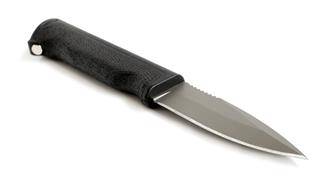



Wheel and axle
The wheel is considered to be one of the most significant inventions in the history of the world. “Before , humans were severely limited in how much stuff we could transport over land, and how far,” wrote Natalie Wolchover in the Live Science article “Top 10 Inventions that Changed the World.” “Wheeled carts facilitated agriculture and commerce by enabling the transportation of goods to and from markets, as well as easing the burdens of people traveling great distances.”
The wheel greatly reduces the friction encountered when an object is moved over a surface. “If you put your file cabinet on a small cart with wheels, you can greatly reduce the force you need to apply to move the cabinet with constant speed,” according to the University of Tennessee.
In his book “Ancient Science: Prehistory-A.D. 500” (Gareth Stevens, 2010), Charlie Samuels writes, “In parts of the world, heavy objects such as rocks and boats were moved using log rollers. As the object moved forward, rollers were taken from behind and replaced in front.” This was the first step in the development of the wheel.
The great innovation, though, was in mounting a wheel on an axle. The wheel could be attached to an axle that was supported by a bearing, or it could be made to turn freely about the axle. This led to the development of carts, wagons and chariots. According to Samuels, archaeologists use the development of a wheel that rotates on an axle as an indicator of a relatively advanced civilization. The earliest evidence of wheels on axles is from about 3200 B.C. by the Sumerians. The Chinese independently invented the wheel in 2800 B.C.
Making Simple Machines with Household Items
These simple machine experiments are truly the best for exploring and learning while having FUN and creating something amazing!
- This DIY Muscle Machine from KiwiCo is a fascinating project using pulleys.
- I Spy Simple Machines from 123 Homeschool 4 Me is a free printable that not only teaches about simple machines, but gives instructions for a fun simple machines scavenger hunt too!
- Bubble Machine Blower Machine from Teach Beside Me – this is such a fun idea kids will get excited about that explores the wheel simple machine
- Lego Zipline from Little Bins for Little Hands is such a cool project to explore pulleys with kids
- This easy to make pulley and lever board from Inspiration Labratories is the perfect introductory project to do indoors with kids of all ages!
- Levers have never been more fun than when you create one out of recycled materials like The OT Toolbox
- DIY Craft Stick Catapult is a fun-to-try activity learning about levers from Coffee Cups and Crayons
- Make science come alive for kids with this Straw Roller coaster from Frugal Fun 4 Boys that explores inclined planes with kids!
- Dive into history with this Ancient Civilization Irrigation Model that explores several simple machines from Teach Student Savvy
Third Class Levers
In a third class lever, the effort is located between the load and the fulcrum.

In a third class lever, the effort is located between the load and the fulcrum. If the fulcrum is closer to the load, then less effort is needed to move the load (2020 Let’s Talk Science).
If the fulcrum is closer to the load, then less effort is needed to move the load. If the fulcrum is closer to the effort, then the load will move a greater distance. A pair of tweezers, swinging a baseball bat or using your arm to lift something are examples of third class levers. These levers are useful for making precise movements.

Third class levers are used when swinging a tennis racquet (left), in staple-removers (centre) and when you lift objects using the muscles in your biceps (right) (Sources: Australian Paralympic Committee via Wikimedia Commons, Frank C. Müller via Wikimedia Commons and John Seb Barber via Wikimedia Commons).
Levers are very useful simple machines used for transferring force. You may not realize it, but you use levers every day!
Wedges

A wedge is a simple machine made of two inclined planes and greatly resembles an inclined plane or a ramp. One of its ends is usually thick, while the other one is sharp. Wedges make work easier by increasing the distance over which an object moves while decreasing force. Longer edges make work easier than shorter ones since they have an extra mechanical advantage. Wedges are used for different purposes such as cutting, holding together, and tightening objects.
Human beings have been using wedges for millions of years ago. In ancient times, people would use them for hunting, cutting trees, and carving stones. The ax is also one of the ancient wedges made by man. One of the applications of wedges in real life is modern cars and jets. They usually have pointed front parts that help them cut through the air with less resistance. There are two types of wedges. These are the single and double wedges.
- Single wedge
- Double wedge
Examples of wedges include axes, chainsaws, knives, and scissors.
Плюсы электрической пилы
- За час работы, у бензопилы Лесник уходит примерно 400мл бензина. Т.е. 20 рублей в час. Электропила примерно аналогичной мощности, при местных тарифах, потребляет электричества на 6 рублей в час.
- Меньше шума и отсутствие выхлопных газов. Это возможность работать в закрытых помещениях.
- Нет необходимости ездить 30км на АЗС.
- Не нужно предварительно смешивать топливо с маслом для двигателя. Воткнул в розетку и приступил к работе.
- Электрический двигатель меньше нуждается в ремонте и обслуживании.
- Сокращается вероятность возгорания при работе с топливом.
Прикинув плюсы и минусы, учитывая наличие бензопилы (надеюсь рано или поздно удастся купить новую пружину), было принято решение брать именно электрическое устройство.
Не обращайте внимания на особенности перевода на сайте Леруа
What Simple Machines Are in A Bike?
Many of the machines we have nowadays are a combination of various simple machines, the bike included. It usually has the following simple machines.
- Wheel and axle: the pedals, cassette, wheels, and crankset
- Pulleys: braking mechanism, drive train, shifting mechanism, and chains on the gears
- Levers: handlebars, brakes, and gear shifters
- Inclined planes: tire repair kit, chainrings teeth, screws that hold it together
Since a bicycle is a compound of simple machines, it also makes work easier. How does it accomplish this? If you choose to walk, you’re going to need a lot of time and energy. Using a bicycle can help you reach your destination faster and using less energy.
Wheel and Axle

The wheel and axle are some of the most commonly used simple machines and have been in existence for several decades. Before its invention, there were so many transport limitations, especially when heavy goods were to be taken to longer distances. A wheel and axle is a simple machine with a wheel with a groove, with a rod running through it(axle).
In ancient times, it was used to fetch water from a well. It makes work easy by changing the distance over which force is applied. The wheel and the axles rotate simultaneously. This means that both will complete a rotation using the same time. Since the two have different radiuses, the distance they cover within the same time is different. This is what provides the mechanical advantage. A small amount of force is applied to the wheel, which is then transformed to a stronger force at the axle.
The wheel also reduces friction significantly when an object is being moved, making work easy. The innovation of the wheel and axle led to the construction of several objects such as carts and chariots, which made transport easy. Apart from reducing friction, a wheel and axle also multiply force. This means that when force is applied to the wheel, it is transmitted to the axle and is even much greater. A wheel and axle can work in two ways. These include:
- Force applied on the wheel
- Force applied on the axle
Simple machines for kids
Are your elementary age students learning about simle machines for kids? If so the best way to learn is to do; try making some simple machine projects to see how helpful simple machines are in action! Using these simple machines projects you can learn about simple machines like inclined planes, wheel & axel, wedges, levers, pulley, and screws with these fun science experiments for kids. Whether you are a parent, teacher, or homeschooler – you will love that these simple machines experients are created making simple machines with household items! So keep scrolling, pick a DIY simple machines to try, and get working on simple machines at home with your preschoolers, kindergartners, grade 1, grade 2, grade 3, grade 4, grade 5, and grade 6 students!
Simple machines activities
With over 30 creative, fun, and unique ideas for teaching simple machines for kids you are bound to find the perfect project for your target audience. These are fun activiteis for kids in social isolation as you can make simple machines around the house .Your hardest choice is which one of these science projects to try first!


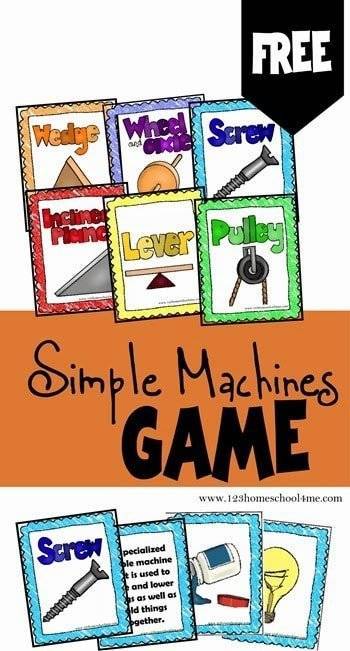
Simple Machines Projects
- Inclined Planes for kids – explanation, activities, and resources
- Wheel and Axle for kids lesson with projects and other fun ideas
- Gears for Kids filled with lots of hands on activities
- Wedges and Screw Simple Machine Lesson for children
- Levers and Pulleys lesson for students
- I Spy simple machines for kids
- MATCH – Simple Machines Game
- 30 Simple Machines for Kids Projects
- Free Simple Machines Worksheet to fold into a clever booklet
- Candy Simple Machines Project
- Pulley Experiment from recycled materials
Fun Science for Kids
Looking for lots more fun, science experiments for kids? You’ve GOT to try some of these outrageously fun science experiments for kids! We have so many fun, creative and easy science experiments for elementary age children:
- 100 Amazing Food science experiments for kids – arranged by type of science
- Colorful Capillary action science experiment (also known as walking water)
- Lots of really cool dry ice experiments to try at home
- Amaze kids with these 12 Hands on Science experiments with batteries
- 24 Epic Solar system science projects to try this week
- Fun Water balloon science experiment that explores density
- 50 Fun Preschool science experiments the whole family will want to try
- Amazing, heat-sensitive color changing slime
- Simple Galaxy science project
- Easy and Fun Dancing Raisins Experiment
- Learn about weather as you find how to make a weather vane
- Eye opening Eye science experiments
- Easy-to- make Air pressure science project
- Amazing POP rocks science experiment is one of our all-time favorite science experiments we like to do during the summer are
- Stunning Chromatography Flowers are so pretty you’ll forget it was as science project!
- How to Make a Lava Lamp – super easy and SO cool!
- 30 Simple machines science projects kids will want to try
- Easy, fascinating, and colorful project answering Why do Leaves Change Color Experiment
- Free Printable Animal Classifications for Kids Cootie Catchers
- 19 Edible science experiments – which delicious project will you try first?
- HUGE Free Solar System Unit (coloring pages, hands on science projects, worksheets, and more!)
- Pipe Cleaner Constellation Activity (As seen on Good Housekeeping!)
- Teach kids about conductivity with this fun squishy circuits projects
- Amazing, Heat Sensitive, Color Changing Slime
- Life Cycles for Kids (from penguin to sunflower and spider to turkey we have LOTS of life cycles to explore and learn about)
- EASY, Colorful Oil and Water Science Experiment
- Kids will be amazed as you change colors of white flowers with this Dying Flowers Science Experiment
- This super cool Lego Zipline is fun and simple to make
- Human Body Project
- Check out this super cool look INSIDE a Volcano Project
- Exploding Watermelon – science experiment that explores potential and kinetic energy with a big WOW moment!
- Memorable Life Size Skeletal system science project – includes free printable template
- Find LOTS more Easy Science Experiments for kids of all ages!
- Money Math Games – lots of fun, clever, and FREE money games and activities for kids.
Looking for more fun, creative ways you can begin your free homeschool? We have over 1,000,000 pages of FREE Printable Worksheets including resources for: pre k worksheets, kindergarten worksheets, 1st grade worksheets, 2nd grade worksheets, 3rd grade worksheets, 4th grade worksheets, 5th grade worksheets, 6th grade worksheets, and more. Plus see our history lessons for kids, hands-on countries for kids, printable math games, language arts worksheets, sight word worksheets, free alphabet printables, and cvc word activities for kids of all ages!
Examples of Lever Simple Machine
1. Nut Cracker
A nutcracker is a prominent example of a second-class lever simple machine. Here, the fulcrum is located at one end of the machine, and the load or the nut, in this case, is placed in the middle. The force required to break the nut is applied to the end that is present opposite to the fulcrum.
2. Seesaw
Seesaws demonstrate the working of a first-class lever simple machine in the simplest possible way. Here, the fulcrum is located in the middle of an iron rod. The child sitting on one end of the beam acts as a load, while the child sitting on the opposite end applies the necessary force to move the load.
3. Scissors
The pivot along which the complete structure of a pair of scissors moves is located in the middle. The load, i.e., the paper or cloth is placed between the blades of the scissors at one end, whereas the user exerts mechanical force to the opposite end. The applied force gets transferred to the load through the fulcrum or the pivot, thereby causing the deformation of the load. Hence, a pair of scissors act as a first-class lever simple machine.
4. Plier
In terms of working, a plier is very much similar to that of a pair of scissors. It is yet another example of a first-class lever machine where the force is applied at one end, the load is placed at the opposite end, and the balance point is present in the middle.
5. Stapler
The balance point or the fulcrum of a stapler is present at one edge, whereas the force is applied to the opposite end. The load or the sheets of paper are placed in the middle. Hence, a stapler is a classic example of second-class lever simple machines.
6. Wheelbarrow
A wheelbarrow consists of a metallic container that is attached with handles at one end and a wheel at the other end. Here, the wheel acts as a fulcrum or the balance point, the load is placed in the middle, and the push force is applied to the handles. Therefore, the arrangement forms a second-class lever simple machine.
7. Human body
Various joints in the human body function on the basic principle of a lever simple machine. These body parts include the elbow joint, Achilles tendon, the joint between hummers and radius-ulna, the joint between the skull and the atlas vertebrae, etc.
8. Broom
When a broom is used for sweeping dirt, it acts as a third-class lever simple machine. This is because the load is present at the one end of the broom, i.e., on the brush side, the effort or the force is applied in the middle, and the pivot is located at the top.
9. Hammer
Hammer is yet another example of a third-class lever machine. The force is applied at the centre, the load or the reaction of the force is observed at the end, and the pivot is formed on the opposite end.
10. Balance Scale
A balance scale makes use of a pivot in the middle of a beam. On either side of the scale, containers are attached that are used to contain the standard and the unknown weights. This means that the fulcrum is present in the middle, whereas the load and effort are present on either side of the beam. Hence, a balance scale is one of the best examples of a first-class lever simple machine.
Force multipliers
In addition to reducing friction, a wheel and axle can also serve as a force multiplier, . If a wheel is attached to an axle, and a force is used to turn the wheel, the rotational force, or torque, on the axle is much greater than the force applied to the rim of the wheel. Alternatively, a long handle can be attached to the axle to achieve a similar effect.
The other five machines all help humans increase and/or redirect the force applied to an object. In their book “Moving Big Things” (It’s about time, 2009), Janet L. Kolodner and her co-authors write, “Machines provide mechanical advantage to assist in moving objects. Mechanical advantage is the trade-off between force and distance.” In the following discussion of the simple machines that increase the force applied to their input, we will neglect the force of friction, because in most of these cases, the frictional force is very small compared to the input and output forces involved.
When a force is applied over a distance, it produces work. Mathematically, this is expressed as W = F × D. For example, to lift an object, we must do work to overcome the force due to gravity and move the object upward. To lift an object that is twice as heavy, it takes twice as much work to lift it the same distance. It also takes twice as much work to lift the same object twice as far. As indicated by the math, the main benefit of machines is that they allow us to do the same amount of work by applying a smaller amount of force over a greater distance.
A seesaw is an example of a lever. It’s a long beam balanced on a pivot. (Image credit: BestPhotoStudio Shutterstock)
Simple machines at home
Kids will have fun designing and testing out their simple machines activities they create:
- Launching Snowman from Buggy & Buddy is such a cute activity to help kids explore levers in a super creative way!
- What can simple machines make? Take a peak with this Make a Crane from At Home with Ali
- Wheel and Axle Project using plates from Sciencing is a fun, simple to make project with items you probably have laying around your house.
- Simple and to the point Movable Pulley with Paper Clips from Carrots are Orange
- Nails vs. Screws from 123 Homeschool 4 Me gives an explanation and practical hands on activities kids can do to explore the why we use screws instead of nails
- Nuts, Bults & Screw Sculptures from Preschool Powol Packets is less about learning and more about discover and observation
- from Kids Activities Blog is a mega size project showcasing the lever
- This epic PVC Pipe Pulley from Little Bins for Little Hands is big in size, not in cost or difficulty to make!
- Rolling Pin Pulley from Kids Activities Blog shows us that you don’t need anything fancy to make simple machines work
- Tissue Box Catapult from Premeditated Leftovers is a fun twist on the typical lever project you’ve seen
- Using Marbles to Experiment with Forces from Inclined Planes from The Techy Teacher turns discovering inclined planes into a game. Ready. Set. Learn!
- What’s the Big Deal with a Fulcrum? from Ozark Ramblings is a simple, no frills look at a lever.
Основные параметры
Электрическая или аккумуляторная цепная пила – какой вариант считается лучшим? Питающиеся от электросети приборы считаются более мощными, надежными и практичными. Характеризуются компактностью и простотой эксплуатации. Зачастую маленькая электропила имеет тихий ход и высокую производительность. Аккумуляторного типа рабочий инструмент не требует привязки к электросети. Прибор работает от съемной/встроенной батареи.
Рекомендуем иметь под рукой запасной аккумулятор. Наличие второй батареи позволяет выполнить больший объем работ. Выбирая между электрическим и аккумуляторным инструментами, лучше ориентироваться на личные предпочтения и частоту эксплуатации пилы.
В преобладающем большинстве электрические цепные пилы характеризуются легкостью, компактностью и маневренностью. Вес такого инструмента не превышает 5–6 кг. Благодаря малому удельному весу электропилу можно использовать для распила дерева на высоте.
При выборе инструмента рекомендуется обращать внимание на продолжительность беспрерывной работы, объем емкости для масла, наличие системы плавного запуска и индикатора уровня заряда батареи. Электропила с ранцевым ремнем считается более удобной в пользовании
Мощность
Однако главным критерием выбора рабочего инструмента является мощность. Чем выше мощность двигателя, тем больше производительность рабочего инструмента. Так, профессиональные пилы мощностью от 2 кВт применяют для распила бревен диаметром от 30 см и более. Агрегаты мощностью 1500–2000 Вт – оптимальное решение для бытового пользования. Мощности такого прибора хватает для выполнения основных задач по хозяйству.
Регулирование цепи
Электропила бытового пользования имеет низкопрофильную цепь. Несмотря на среднюю производительность, низкопрофильная цепь считается более безопасной в эксплуатации. Вибрационный режим и шумовой эффект минимальны.
Регулирование натяжение цепи выполняется классическим или упрощенным методом. В первом варианте не обойтись без плоской отвертки. Для регулирования цепи нужно послабить или, наоборот, подтянуть крепящие винты. Упрощенный вариант подразумевает регулировку цепи посредством смещения специального ползунка.
Длина шины
Глубина пропила зависит от длины шины. Чем выше показатель этого параметра, тем больше функциональность прибора. При выборе длины шины нужно учитывать и мощность прибора. Легкая пилка с длинной шиной не только неудобна, но и небезопасна в использовании.
Глубина пропила зависит от длины шины и особенностей зубьев цепи
Согласно заявлениям ведущих производителей электрических пил, идеальное соотношение мощности и длины шины может выглядеть следующим образом:
- мощность от 2 кВт и больше – длина шины от 40 см;
- мощность 1500–2000 Вт – длина шины порядка 35 см;
- мощность менее 1500 Вт – длина шины около 30 см.
Не менее важно знать шаг шины. Шаг 6,3 мм гарантирует аккуратность и чистоту среза
Шаг 9,3 мм обеспечивает производительность выше среднего, а 9,5 мм – подходит для профессиональных высокомощных электропил.
Плавный пуск
Зачем нужна система плавного пуска, спросите вы? При запуске пилы двигатель подает большой ток, происходит рывок цепи, сопровождающийся обратной отдачей. Предупредить обратный удар помогают системы плавного запуска двигателя.
Безопасность
Цепная пила является потенциально опасным рабочим инструментом. Во избежание получения травм нужно строго следовать инструкции пользования прибором.
Наличие блокировки случайного включения минимизирует риск внепланового запуска пилы. Встроенный антивибрационный режим снижает уровень нагрузки на руки и повышает безопасность инструмента. Инерционный тормоз останавливает цепь сразу же по выключении двигателя.
Кнопка блокировки от случайного включения
Разобравшись с основными техническими моментами и критериями выбора, перейдем непосредственно к знакомству с электрическими цепными пилами.








